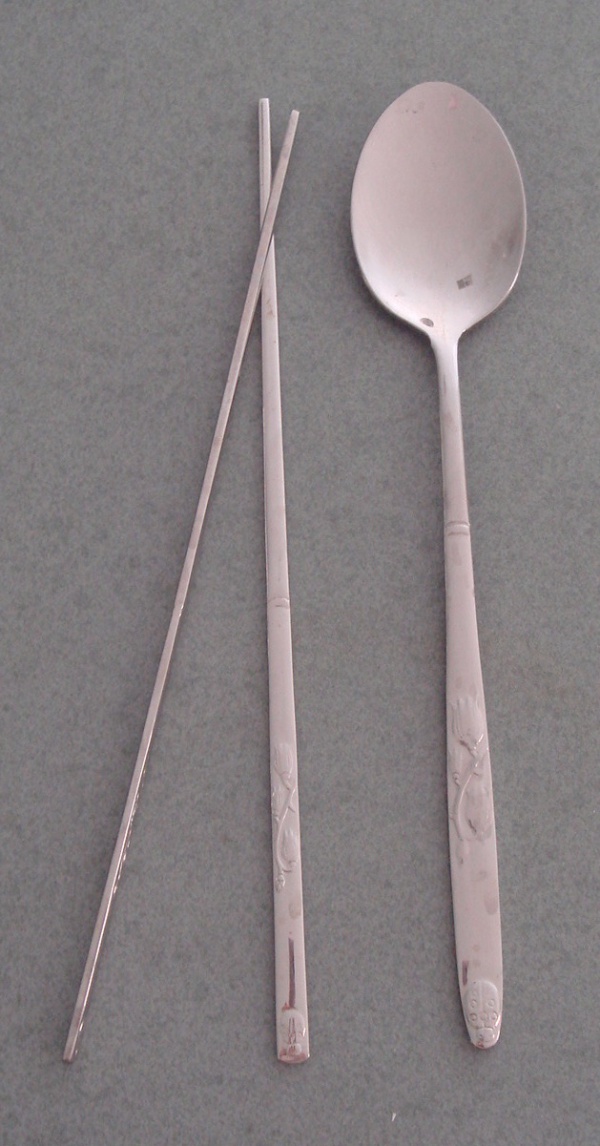Facts About Sujeo
In Korean cuisine, "sujeo" refers to a set of eating utensils composed of a pair of metal chopsticks and a long-handled, shallow spoon, usually made from the same material. The term "sujeo" is a blend of the words "sutgarak" (spoon) and "jeotgarak" (chopsticks). While it is now common to use both utensils simultaneously, this is a relatively modern practice intended to facilitate quicker eating. Traditionally, it is more appropriate to use just the chopsticks, and it is considered impolite to hold both the spoon and chopsticks in one hand, especially when dining with elders.
There are specific etiquette rules for using sujeo. For instance, you should never stick chopsticks upright in food, particularly rice, as this resembles a ritual offering for deceased ancestors and is believed to bring bad luck. If you haven't used the spoon, you can place it on the rice or soup bowl. Korean meals are often consumed quickly and in small portions, minimizing the need to frequently put down your utensils.
Beyond their practical use, sujeo sets hold cultural significance in Korea. Traditionally, cases for sujeo, made from paper or Korean fabrics, were embroidered with symbols of longevity and given as gifts, especially at weddings. Today, these sets are also popular souvenirs, reflecting Korea's rich cultural heritage.

 North Korea
North Korea